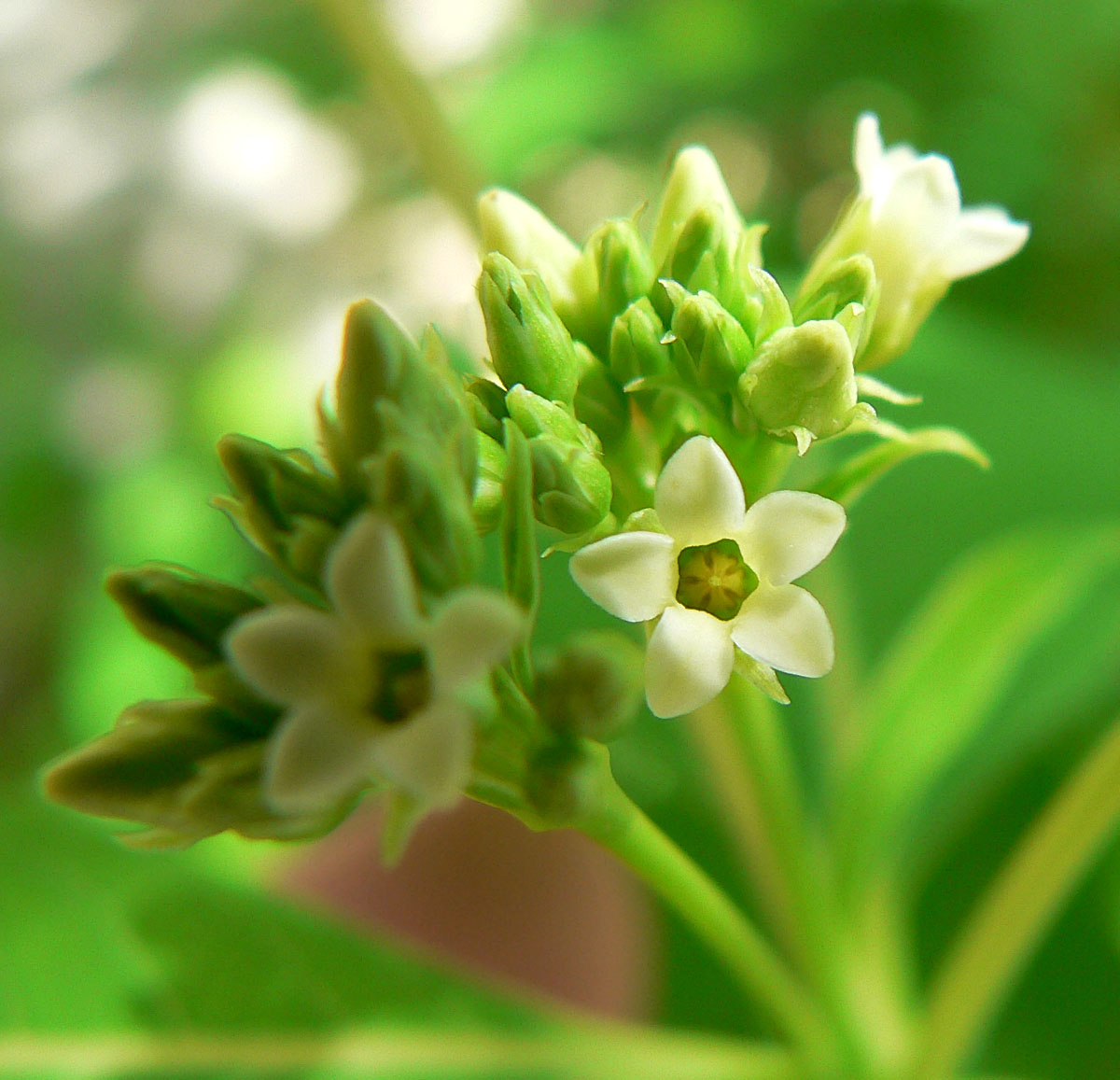Exploring Yellowwood
Scientifically recognized as Apocynaceae and classified under Apocynaceae family, stands out as a distinctive Deciduous tree known for its unique characteristics. While it may also be found under other Synonyms, None commonly used.withNone specified form. You can use our free plant care app PlantPlants to identify Yellowwood.
Temperature
-10 F to 100 F
Watering
Medium; regular watering needed during dry periods
Fertilizing
Balanced fertilizer (10-10-10)
Sunlight
Full sun to partial shade
Toxicity
Toxic; not recommended for consumption



Appearance and Growth Of Yellowwood
At maturity, this species reaches approximately 30-50 feet tall, presenting Dark green, opposite leaves, oval-shaped along with Fragrant, tubular, yellow flowers, followed by Long, slender pods. These features are supported by a reliable Deep taproot, ensuring stability and sustained growth.
Yellowwood Origin and Habitat
Native to North America, Yellowwood thrives in Prefers moist, well-drained soils near streams and lowlands at elevations around Sea level up to 3,000 feet. Best suited for USDA Hardiness Zone 4-8. Whether grown indoor, in a curated garden or a more natural setting, its ecological requirements help maintain its vigor over time.



How to take Care of Yellowwood
Light, Soil and Watering Yellowwood.
You can use our free plant identify app PlantPlants to chose the best spot for Yellowwood, This plant prefers Full sun to partial shade and flourishes in Loamy or sandy soils with a soil pH of about 6.0 7.5.
Yellowwood needs watering,Medium; regular watering needed during dry periods, guided by PlantPlants app, You can get plants daily watering schedule. to maintain Moist but well-drained, ensure steady hydration. Applying water through Drip irrigation or deep watering supports even distribution and helps prevent overwatering or dryness.
Temperature and Humidity
Yellowwood performs best within 50 F 100 F. Its ideal growth occurs at around 70 F 85 F, though it tolerates ranges from -10 F to 100 F. Additionally, maintaining Moderate to high humidity encourages healthy foliage and overall plant vigor.
Fertilization & Soil Health
Feeding with Balanced fertilizer (10-10-10) at the recommended Seasonal Application Frequency on PlantPlants App keeps nutrients balanced. Incorporating Compost or well-aged manure enhances soil structure and fertility, while staying alert to Yellowing leaves, stunted growth helps you adjust care as needed to maintain optimal plant health.
Routine and Maintenance
Regular attention ensures this plant’s beauty and longevity. Late winter to early spring for Thinning and shaping cuts tidies its appearance, while Every 2-3 years as needed may be necessary as it grows, requiring a Increase by 2-4 inches in diameter increase and a fresh Well-draining potting soil with organic matter. for Staking or Support. May require staking when young.
Seasonal Changes and Propagation of Yellowwood
During Late fall to early spring, growth may slow and some Leaves turn yellow and drop in autumn can occur. For those looking to propagate, consider Seed propagation and cuttings and provide Warm, moist conditions with light exposure when starting from seed. If using cuttings, follow Softwood cuttings in moist soil or water to ensure successful rooting and healthy new plants.
Pests, Diseases and Prevention
our free plant identify and care app PlantPlants can help you diagnosisYellowwood problems.Though generally robust, keep watch for Aphids, spider mites and remain vigilant against Root rot, powdery mildew. Implementing Regular monitoring and good air circulation and applying Insecticidal soap for pests, fungicides for diseases when issues arise will help sustain the plant thriving.
Companions and Uses of Yellowwood
This plant pairs nicely with Native wildflowers, other moisture-loving plants and shows None documented, making it a flexible choice for various Specimen tree, shade tree, erosion control.
Edible and Cultural Aspects
the Edible Parts: None. Toxicty of Yellowwood, Toxic; not recommended for consumption. learning about its Not applicable, Not applicable, and Not applicable can be intriguing for culinary explorers. Some traditions highlight its Historically used in folk medicine or note its Often used in traditional landscaping.
Conservation and Status
With an Not currently listed as threatened, proper Habitat protection and sustainable management
Frequently Asked Questions
1. What is Yellowwood?
A deciduous tree known for its bright yellow flowers and beautiful foliage.
2. Where does Yellowwood grow?
Native to North America, often found in moist, well-drained soils.
3. Is Yellowwood toxic?
Yes, it is toxic to both animals and humans.
4. How tall does Yellowwood grow?
It can reach heights of 30-50 feet at maturity.
5. When should I prune Yellowwood?
Late winter to early spring is the best time for pruning.
6. How often should I water Yellowwood?
Water every 5 days in summer and every 14 days in winter.
7. Does Yellowwood require full sun?
It thrives in full sun to partial shade.
8. What are the common pests of Yellowwood?
Aphids and spider mites are common pests.
9. Is Yellowwood suitable for landscaping?
Yes, it is often used as a specimen or shade tree.
10. How can I propagate Yellowwood?
Propagation can be done through seeds or softwood cuttings.



